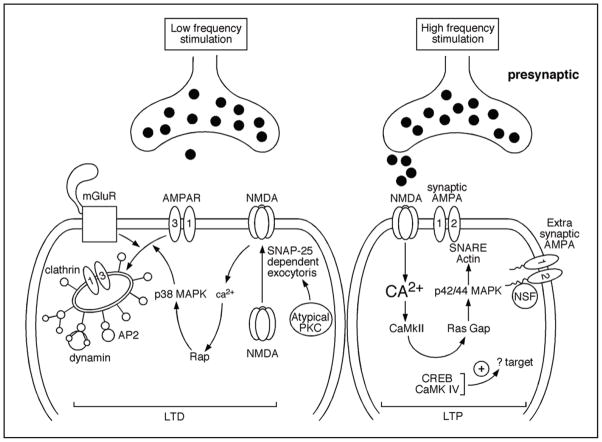Figure 4.
Long-term potentiation and depression are caused by differential signaling in response to different levels of elevated calcium. (A) Long-term depression is induced after a mild intracellular rise in Calcium in response to NMDA receptor activation. This minimal entry of calcium usually results from low-frequency stimulation of the synapse. A reduction in the number of AMPA receptors containing the subunits 1 and 3 is then observed, causing a decrease in synaptic strength. (B) In contrast, a high-frequency stimulation will lead to massive calcium entry through NMDA receptors leading to de novo AMPA receptor insertion at the synapse. The addition of these new receptors will cause a net increase in synaptic strength.

